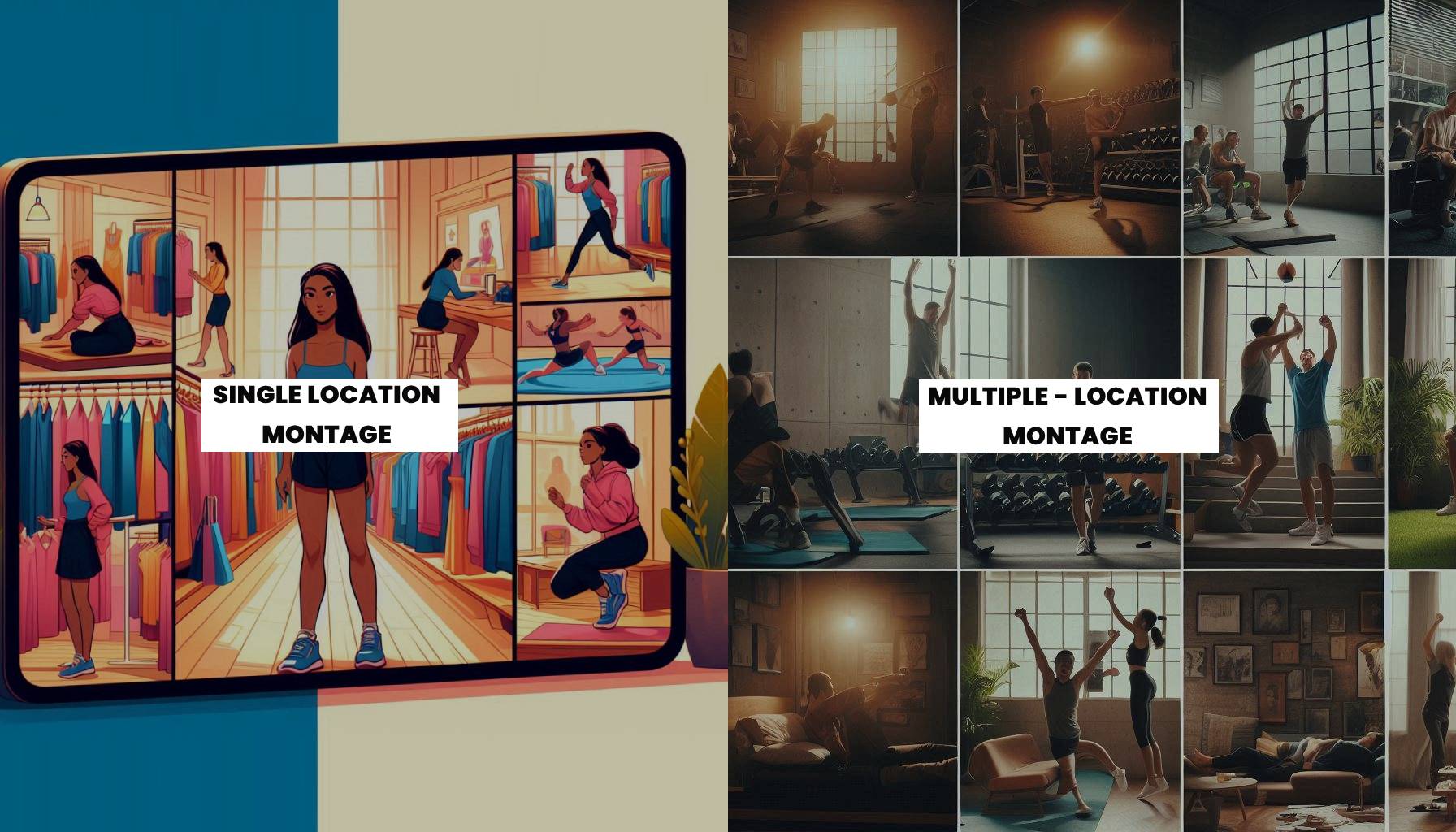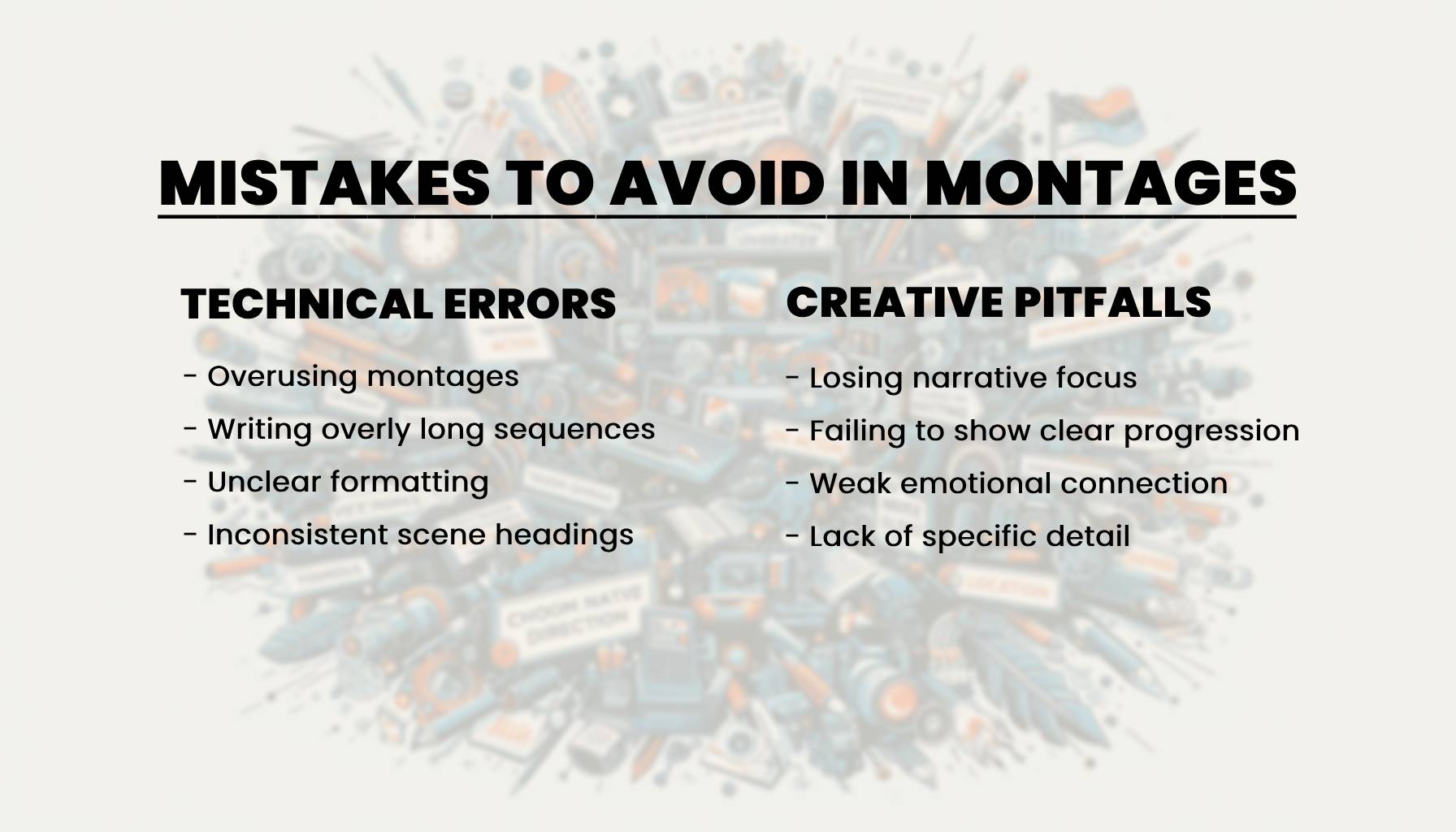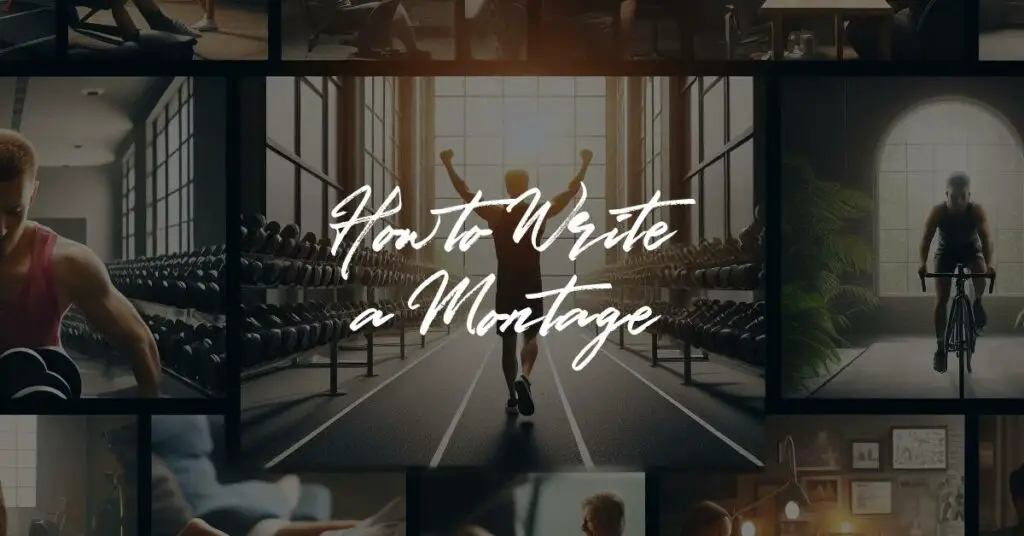Writing a compelling montage sequence can elevate your screenplay from good to unforgettable. Whether you’re crafting a transformative training sequence like Rocky’s iconic stairs scene or a heartwarming relationship development like Carl and Ellie’s life story in Up, mastering the art of montage writing is essential for any screenwriter.
This comprehensive guide will walk you through everything you need to know about creating powerful montage sequences that captivate audiences and serve your story.
What Is a Montage in Screenwriting?
A montage is a series of short scenes or shots edited together to convey progression, passage of time, or thematic development within a condensed timeframe.
Originally pioneered by Soviet filmmaker Sergei Eisenstein in the 1920s, montages have evolved into a fundamental storytelling technique in modern screenwriting.
They allow writers to compress time, show character growth, and create emotional impact through carefully crafted sequences of related images and actions.
Today’s screenwriters use montages for various purposes, including:
- Showing character transformation
- Depicting the passage of time
- Building relationships between characters
- Demonstrating skill development
- Establishing emotional connections
- Compressing extensive narrative information
Understanding Different Types of Montages
Single Location Montages
Single location montages unfold in one setting while showing progression or change. The famous shopping scene in Pretty Woman exemplifies this type, where we watch Julia Roberts’ character try on various outfits within the confines of luxury boutiques. These montages work best when:
- The location itself is significant to the story
- Multiple actions occur in sequence
- The focus is on transformation or progression
- Time compression is needed within a confined space

Multiple Location Montages
Multiple location montages, like the training sequences in Rocky, move across different settings to show broader development or change. These sequences require careful attention to transitions and location variety. They’re particularly effective for:
- Training or preparation sequences
- Relationship development across time
- Character journey sequences
- Showing parallel actions in different locations
Character Development Montages
Character development montages focus specifically on personal transformation. These sequences might combine elements of both single and multiple location montages but always center on the character’s journey. Successful examples include:
- Andy’s fashion evolution in The Devil Wears Prada
- Michael Corleone’s transformation in The Godfather
- Elle Woods’ study montage in Legally Blonde
Industry-Standard Formatting for Montages
Basic Formatting Rules
When writing montages in your screenplay, proper formatting is crucial for clarity and professional presentation. Here’s how to structure your montage:
MONTAGE - TITLE (if needed)
-- First action or scene
-- Second action or scene
-- Third action or scene
END MONTAGE
For single location montages, maintain consistency with scene headings:
INT. GYM - DAY - MONTAGE
-- Sarah does pushups, sweat dripping
-- Sarah lifts weights, muscles straining
-- Sarah runs on the treadmill, determination in her eyes
END MONTAGE
For multiple location montages, clearly indicate location changes:
MONTAGE - TRAINING BEGINS
INT. GYM - DAY
John struggles with his first pullup.
EXT. PARK - SUNRISE
John jogs slowly, out of breath.
INT. BOXING RING - NIGHT
John takes his first punch, staggers back.
END MONTAGE
Writing Techniques for Effective Montages
Creating Emotional Impact
The key to a powerful montage lies in its emotional resonance. Consider these techniques:
- Start with a clear emotional goal for the sequence
- Build progression through increasingly significant moments
- Use specific, vivid details that evoke emotion
- End on a strong note that shows clear transformation
Pacing and Rhythm
Montage pacing should mirror your story’s emotional beats:
- Vary the length of individual moments
- Create a rhythm through action descriptions
- Build to a climactic moment
- Use shorter descriptions for faster pacing
- Include longer beats for emotional impact
Incorporating Music and Sound
While you can’t control the final soundtrack, you can suggest audio elements:
- Indicate when music would enhance the sequence
- Note significant sound effects that drive the narrative
- Specify silent moments for impact
- Balance between action and audio descriptions
Common Montage Categories and Their Execution
Training Montages
The training montage, popularized by films like Rocky and The Karate Kid, follows a specific structure:
- Show the starting point (inexperience/weakness)
- Present increasingly challenging tasks
- Include setbacks and small victories
- Culminate in a moment of triumph
Example structure:
MONTAGE - THE TRANSFORMATION BEGINS
-- Mike stumbles through basic punches, his form sloppy
-- Mike runs, barely making it around the block
-- Mike hits the speed bag, missing more than connecting
-- WEEKS LATER: Mike's punches snap with precision
-- Mike sprints up hills, powerful and confident
-- Mike works the speed bag like a pro, never missing a beat
END MONTAGE
Relationship Development Montages
For showing the growth of relationships, consider:
- Starting with initial awkwardness or distance
- Showing small moments of connection
- Building to deeper emotional bonds
- Including both happy and challenging moments
Passage of Time Montages
To effectively show time progression:
- Use clear visual indicators of time passing
- Include seasonal changes when appropriate
- Show evolution of characters or situations
- Maintain emotional connection through changes
Production Considerations
When writing montages, keep these practical elements in mind:
Technical Aspects
- Consider budget implications of each scene
- Be mindful of location requirements
- Think about practical effects needed
- Account for potential scheduling challenges
Software and Tools
- Use industry-standard software like Final Draft or WriterDuet
- Utilize proper formatting templates
- Consider production scheduling requirements
- Maintain consistent formatting throughout
Common Mistakes to Avoid
Technical Errors
- Overusing montages (limit them to crucial moments)
- Writing overly long sequences
- Unclear formatting
- Inconsistent scene headings

Creative Pitfalls
- Losing narrative focus
- Failing to show clear progression
- Weak emotional connection
- Lack of specific detail
Expert Tips and Advanced Techniques
Industry Insights
Professional screenwriters emphasize several key points:
- Keep montages focused and purposeful
- Ensure each moment drives the story forward
- Use specific, vivid details
- Consider the visual impact of each scene
Modern Innovations
Contemporary montage techniques include:
- Split-screen sequences
- Social media integration
- Digital communication elements
- Mixed media approaches
Practical Applications
Writing Exercise: Creating Your First Montage
Try this exercise to practice montage writing:
- Choose a clear transformation goal
- List 6-8 key moments showing progression
- Write each moment in one clear, vivid sentence
- Arrange moments for maximum emotional impact
- Format according to industry standards
Analysis Exercise
Study these classic montages:
- Up’s married life sequence
- Rocky’s training montage
- The Social Network’s coding montage
- Chef’s cooking sequences
Conclusion
Writing effective montages requires a balance of technical skill and creative storytelling. Remember these key points:
- Focus on emotional progression
- Maintain clear formatting
- Show rather than tell
- Build to a meaningful conclusion
- Serve the larger story
With practice and attention to detail, you can create montage sequences that enhance your screenplay and resonate with audiences. Keep studying successful examples, practice various types, and always ensure your montages serve a clear narrative purpose.
Additional Resources
For further study on montage writing:
- Save the Cat! by Blake Snyder
- The Sequence Approach by Paul Joseph Gulino
- Your Screenplay Sucks! by William M. Akers
- The Writer’s Journey by Christopher Vogler
Remember, the best montages aren’t just collections of scenes—they’re carefully crafted sequences that advance your story and deepen audience engagement. Keep practicing, studying successful examples, and refining your technique to master this essential screenwriting tool.
